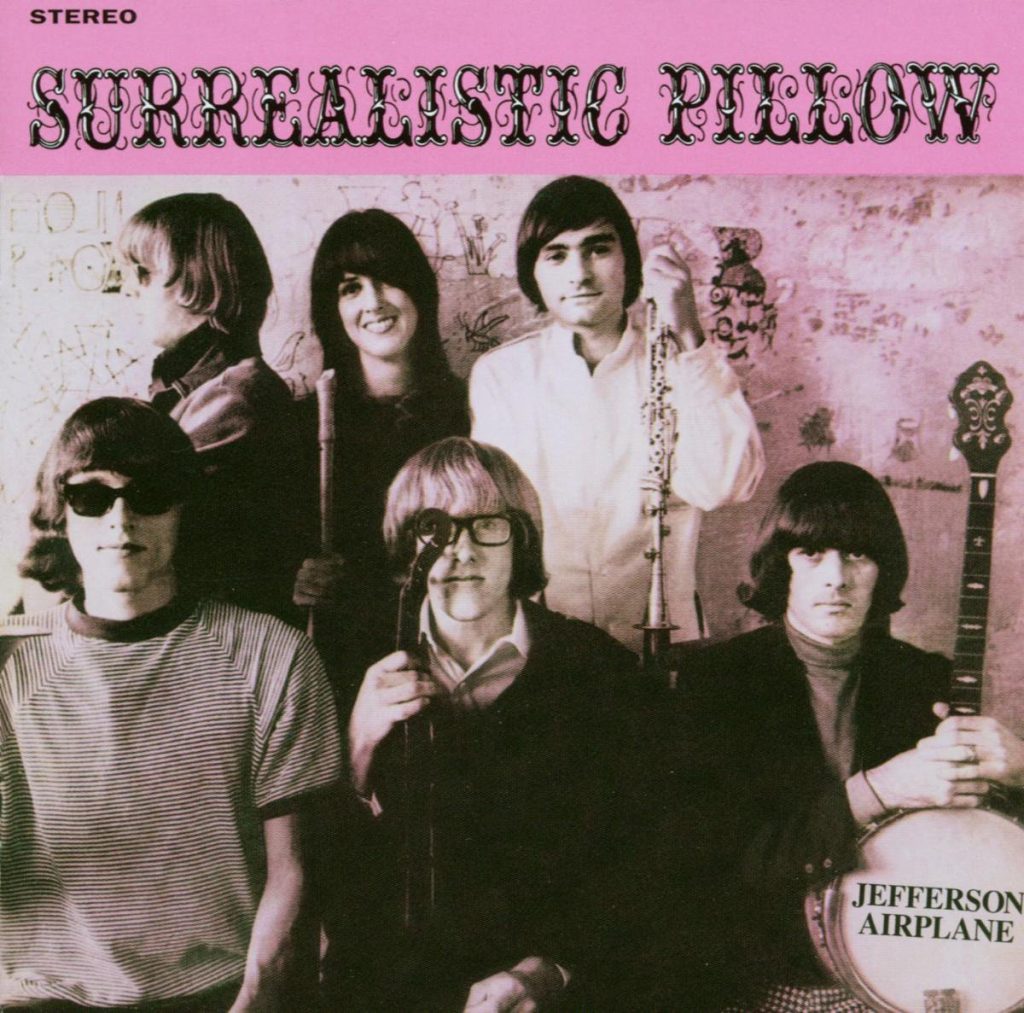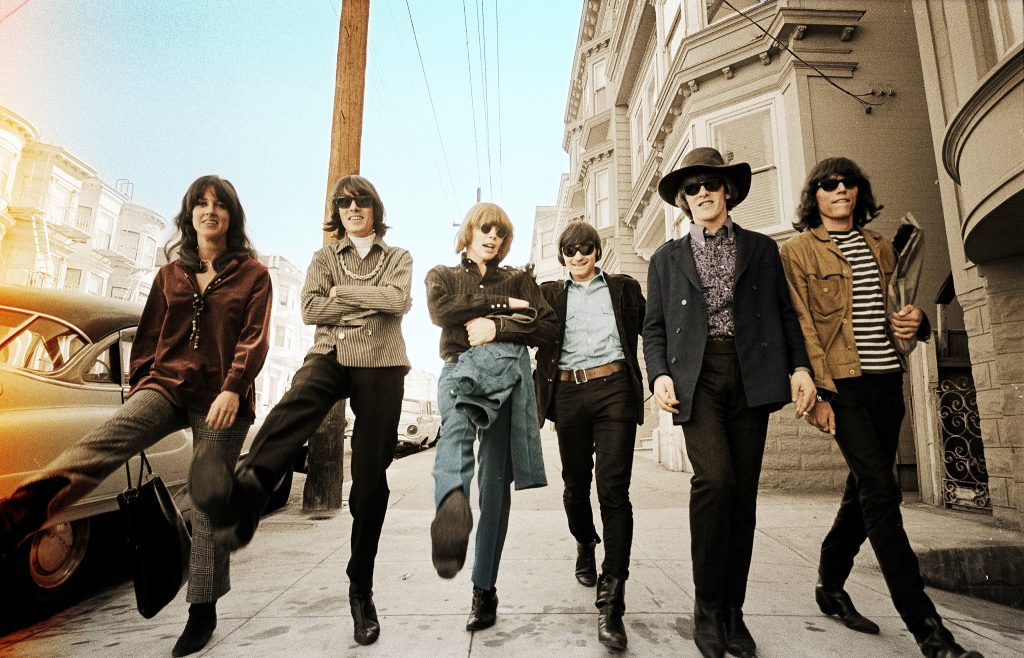
There was a period in the history of music when boundaries were deliberately broken and redefined. Sounds transcended the tangible, metamorphosing into pure sensory experiences. At the heart of this seismic and shifting landscape was Jefferson Airplane, the mothership of psychedelic rock, catapulting the world into an unprecedented sonic and emotional adventure.
Jefferson Airplane was born at the epicentre of the 1960s counterculture, San Francisco. It began with Marty Balin and Paul Kantner, two musicians united by a shared vision of a world expressed through the prism of bold, unconventional music. They were later joined by Grace Slick, Jorma Kaukonen, Jack Casady and Spencer Dryden to form the original Jefferson Airplane crew.

It was in 1967, with the album Surrealistic Pillow, that the band really took off. The album, a psychedelic meditation on love, war and the confusion of the times, captured the spirit of a generation with tracks such as “White Rabbit” and “Somebody to Love”. Jefferson Airplane's distinctive sound – a harmonious fusion of folk, rock and jazz, sprinkled with elements of Indian music – had emerged, providing a hallucinogenic soundtrack to the flower power era.
Grace Slick, with her powerful voice and irreverent style, left an indelible mark on the band and on rock music in general. As one of the first female rockers to achieve significant fame, she paved the way for a generation of women in music, demonstrating that they could rival – and often surpass – their male counterparts.
But like all great epics, that of Jefferson Airplane was not without its turbulence. Over time, tensions began to blossom between the band members. Balin's departure in 1971, followed by Dryden's shortly afterwards, signalled a profound change. The band morphed into Jefferson Starship, before splintering into several other formations, including Hot Tuna and Starship.
Today, Jefferson Airplane's aerial journey is an indelible testament to daring and innovation. The band has left a lasting legacy that has influenced countless musicians and continues to captivate new generations. Their music remains a vibrant, living chronicle of the 60s counterculture, capturing the thirst for exploration, the desire for freedom and the willingness to defy social norms that defined the era.
Where does the name Jefferson Airplane come from?
The name ‘Jefferson Airplane' is the brainchild of Jorma Kaukonen, the band's guitarist. The story goes that he came up with the name in jest during a discussion with a friend. The word ‘Jefferson' was chosen simply because it sounded good and very ‘American', in reference to the third President of the United States, Thomas Jefferson.
As for ‘Airplane', this word is a variation of ‘air plan'. It refers to a slang term coined by Kaukonen himself to describe a marijuana joint. The band liked the sound and meaning behind ‘Jefferson Airplane' and decided to adopt it as their official name.
It's worth noting that, despite its humorous origins, the name ‘Jefferson Airplane' has become a powerful symbol of the 60s counter-culture, representing the innovation, experimentation and freedom of expression that characterised that era.
The album: Surrealistic Pillow
“Surrealistic Pillow, the band's second album and the first with Grace Slick as lead singer, cemented Jefferson Airplane's status as pioneers of psychedelic rock. The twelve tracks on the album are a mosaic of styles reflecting the band's eclectic influences, from folk and blues to classical music and baroque pop.
Two tracks in particular stand out: ‘Somebody to Love' and ‘White Rabbit'. These two iconic tracks, both driven by Slick's powerful, expressive vocals, have propelled the band to international stardom. “White Rabbit”, a hallucinogenic ballad inspired by the adventures of Alice in Wonderland, and “Somebody to Love”, a passionate declaration of independence and insubordination, have become anthems of the counter-culture.
But beyond its commercial success, Surrealistic Pillow has distinguished itself by its lyrical audacity and political commitment. The band used their art to defend important causes and describe the reality of their time. Songs like “Plastic Fantastic Lover”, “Embryonic Journey” and “Comin' Back to Me” offer a deep and complex vision of the reality of the times, from love and loneliness to social and political criticism.
Musically, the album is a sonic epic where heady melodies mingle with bold, inventive arrangements. The vocal harmonies, saturated guitars and irresistible rhythms create an atmosphere that is both intoxicating and soothing, like the perfect soundtrack to a psychedelic journey.
More than fifty years after its release, ‘Surrealistic Pillow' has lost none of its relevance or charm. The album remains an essential milestone in rock history, a record that captured the essence of an era of change and experimentation.
The song: White Rabbit
There are some songs that, from the very first notes, transport us to another world. Jefferson Airplane's “White Rabbit” is one such song. With its hypnotic bass riff, hallucinogenic lyrics and Grace Slick's unforgettable vocal performance, “White Rabbit” remains a true monument to psychedelic music.
The song is a tribute to Lewis Carroll's Alice in Wonderland, but like the literary saga, it explores much darker and deeper territory than the apparent innocence of the children's story suggests.
The song takes us on a surreal journey, where mushrooms make Alice tall and pills make her shrink. Grace Slick uses these references to express her criticism of society at the time, particularly the Vietnam War and oppressive social norms. The reference to drugs here is a metaphor for rebellion and the quest for emancipation.
“White Rabbit” opens with a sinuous, hypnotic bass line, a reference to Spanish war drums. This choice is not insignificant, as Grace Slick wanted to evoke the revolution, the movement of young people seeking to free themselves from the constraints of traditional society. The song's crescendo, which culminates in Slick's voice reaching lyrical heights, expresses this feeling of revolt and awakening.
Although ‘White Rabbit' is famous for its hallucinogenic and rebellious nature, the song is also a profound reflection on the role of literature and art in shaping our view of the world. Using elements from Lewis Carroll's tale, Jefferson Airplane invites us to question our reality, to ask ourselves whether the stories we tell ourselves are really our own, or whether they are merely mirages.
More than fifty years after its release, “White Rabbit” remains a deeply resonant and relevant song. It continues to inspire musicians, filmmakers and writers, drawing new generations into its hypnotic wake.
A version performed by P!nk popped up on Youtube in 2017.
Where to listen to Surrealistic Pillow?
- Listen to Surrealistic Pillow on Spotify
- Listen to Surrealistic Pillow on Deezer
- Listen Surrealistic Pillow on Youtube